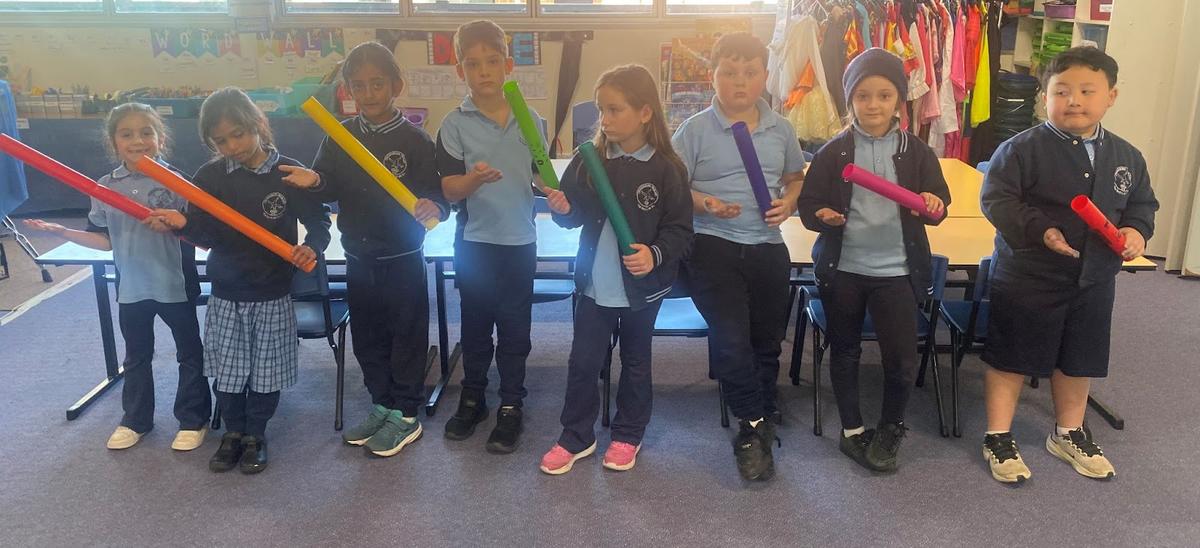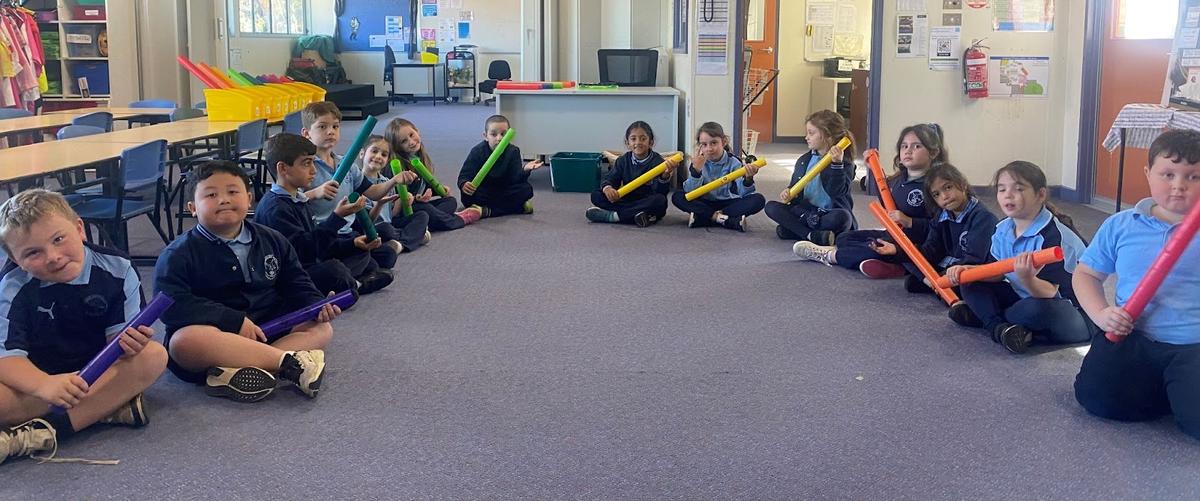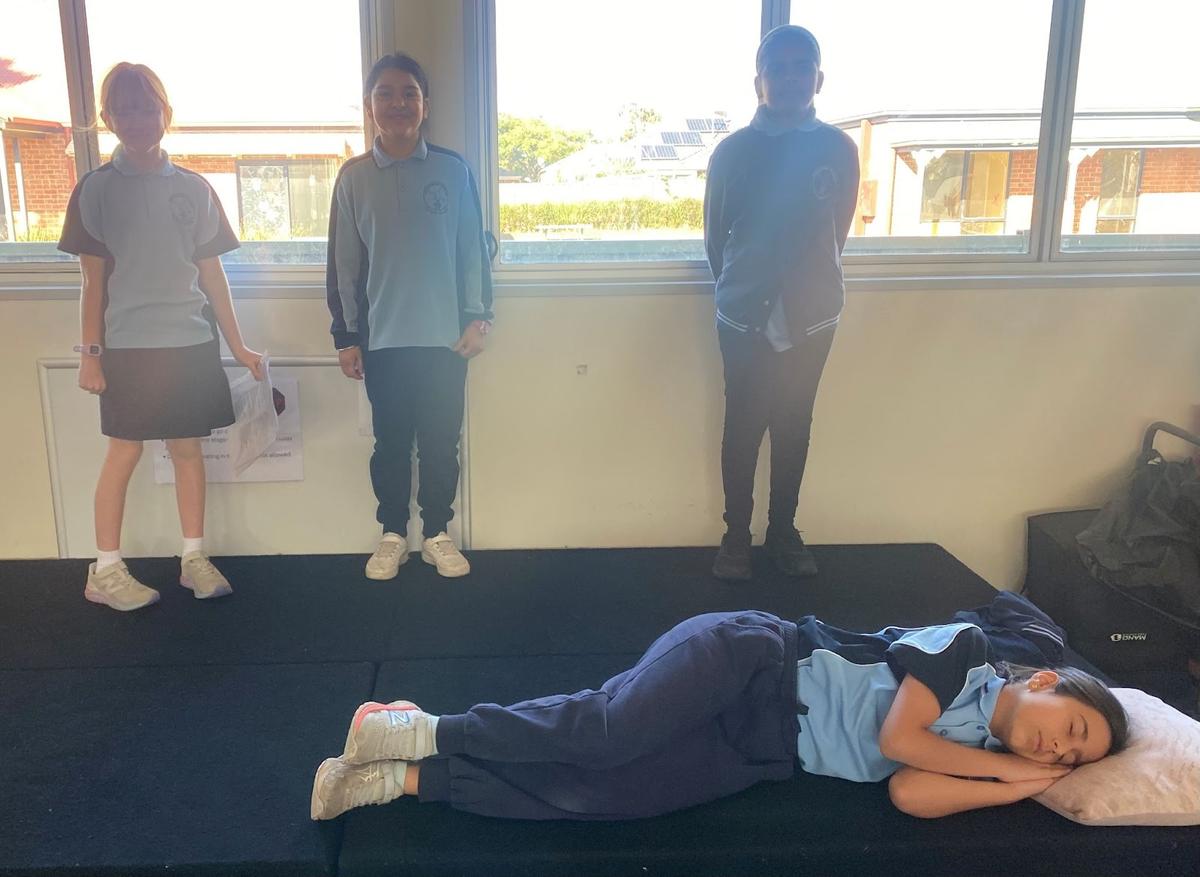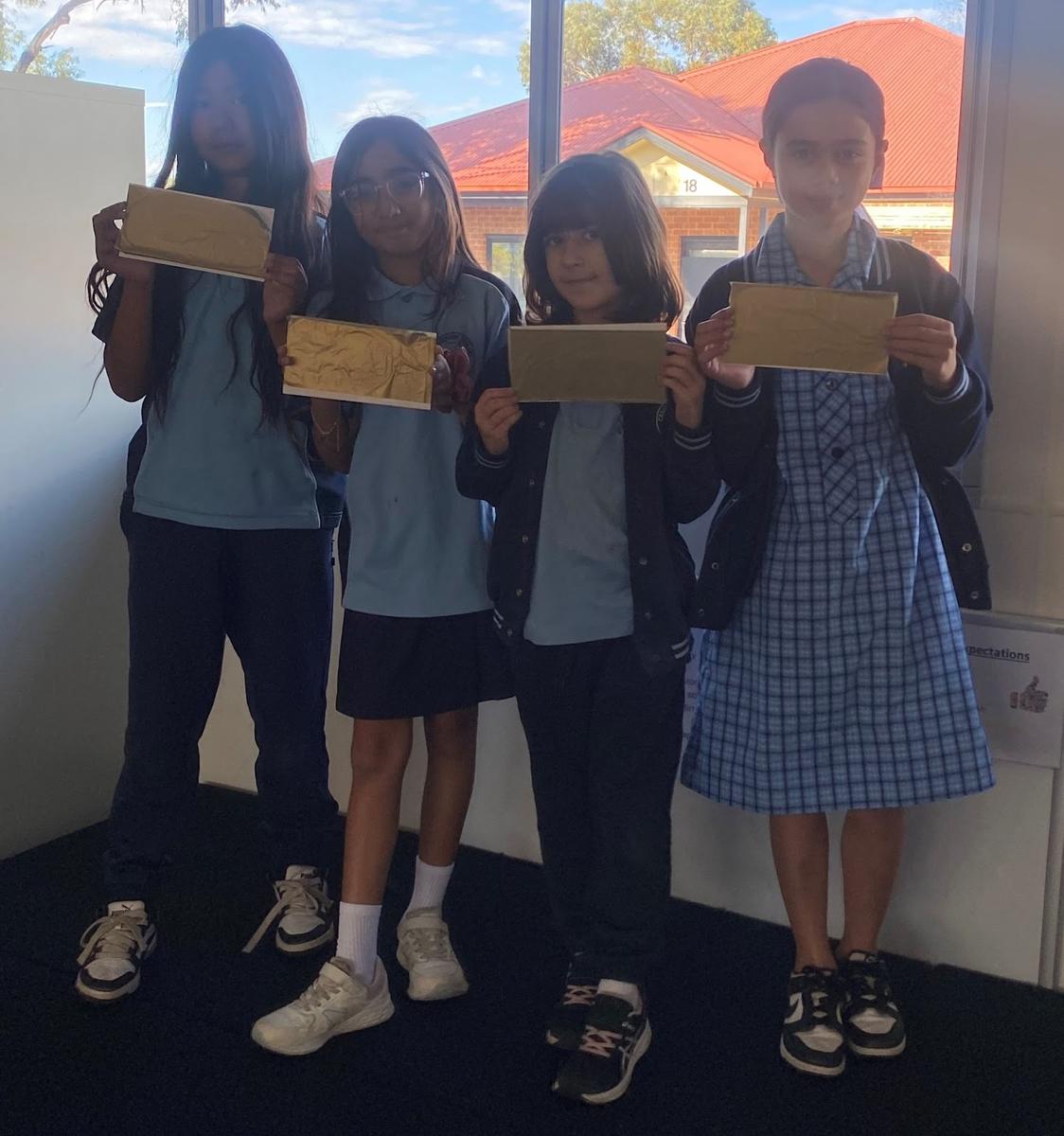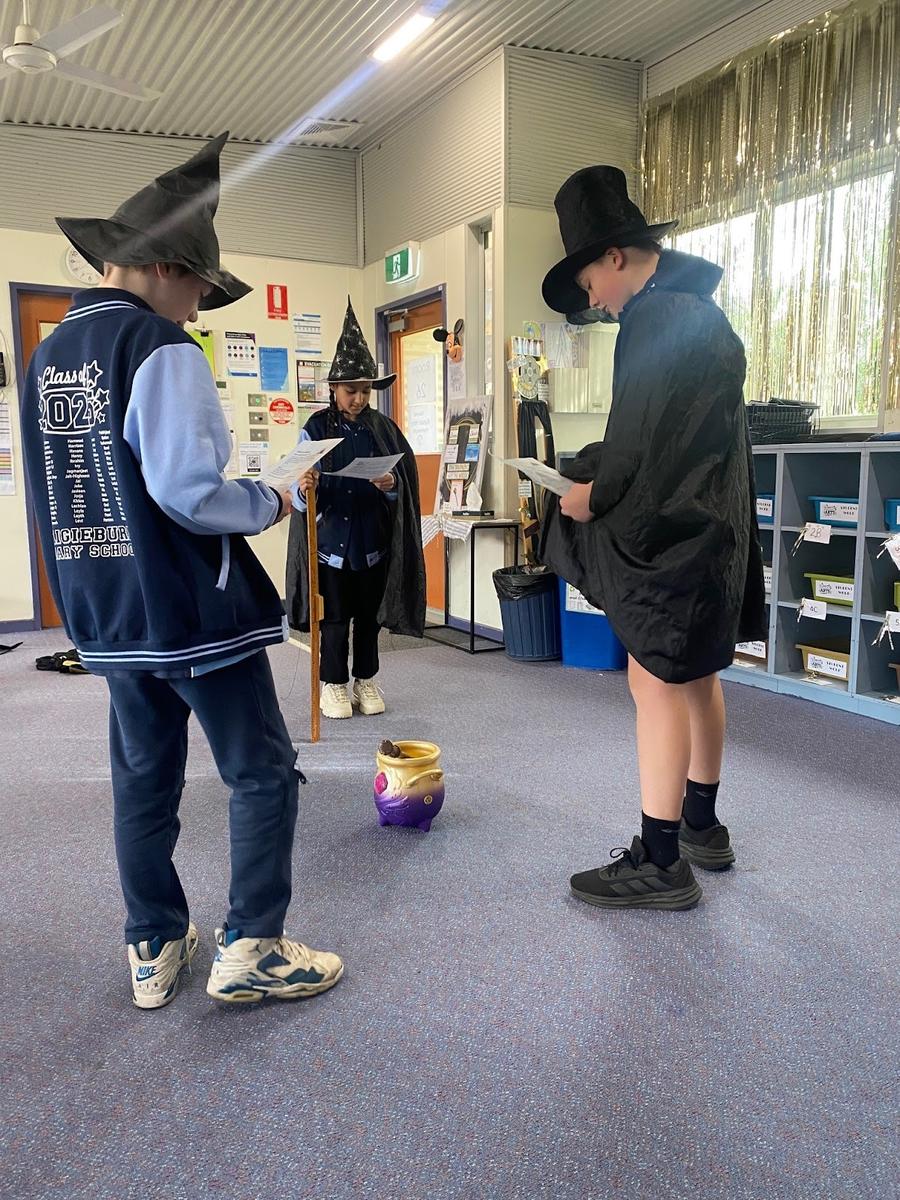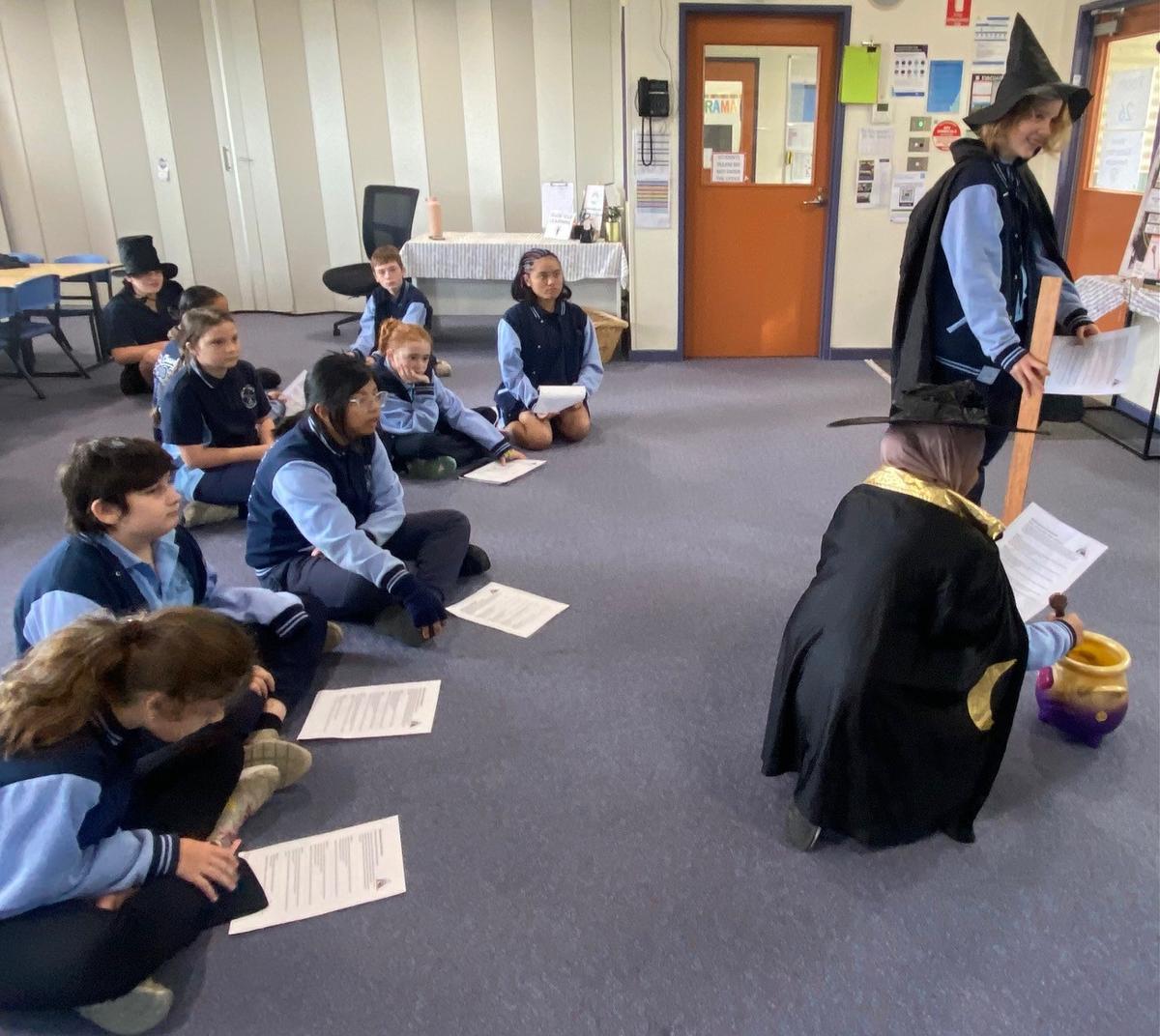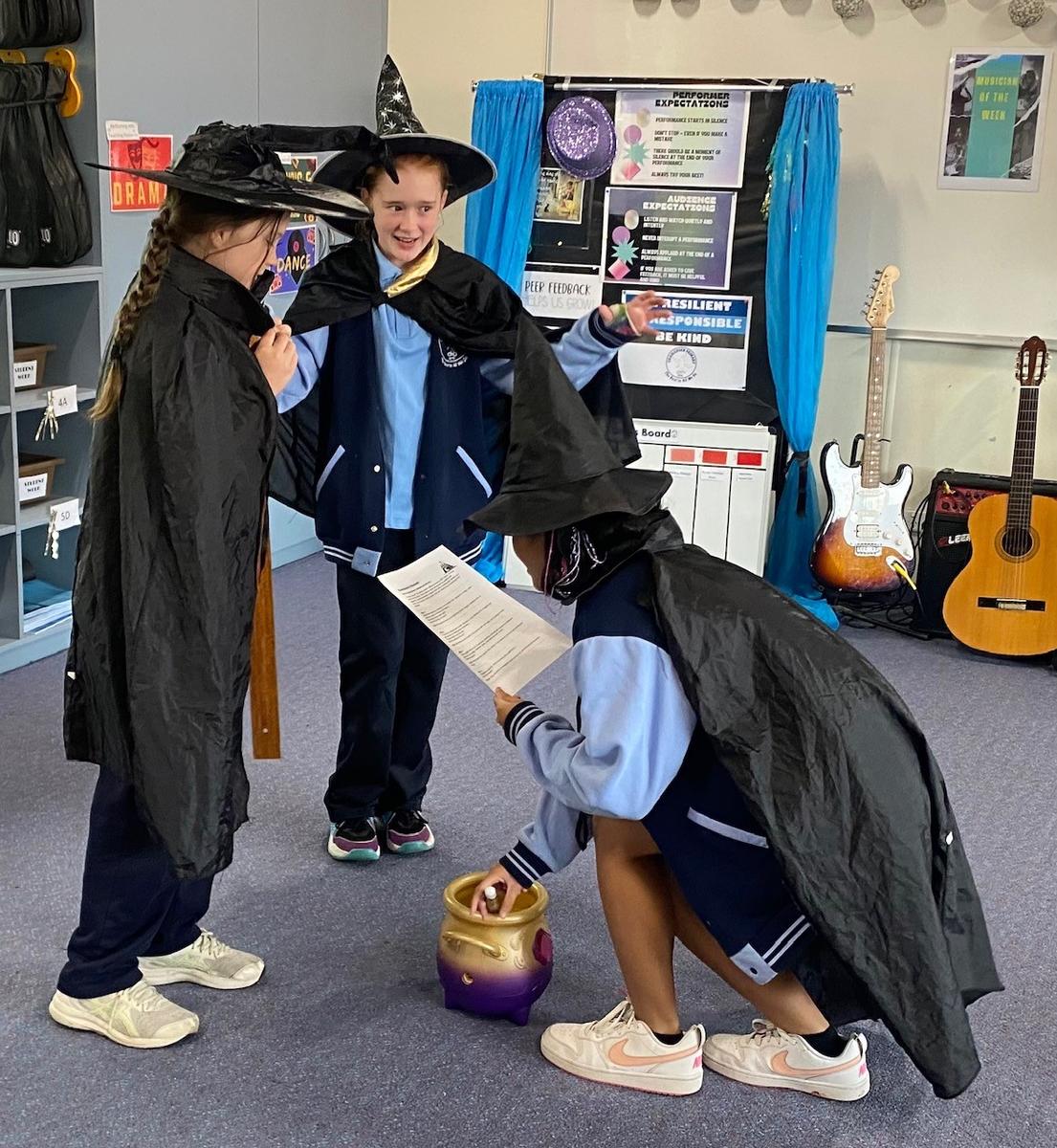Performing Arts
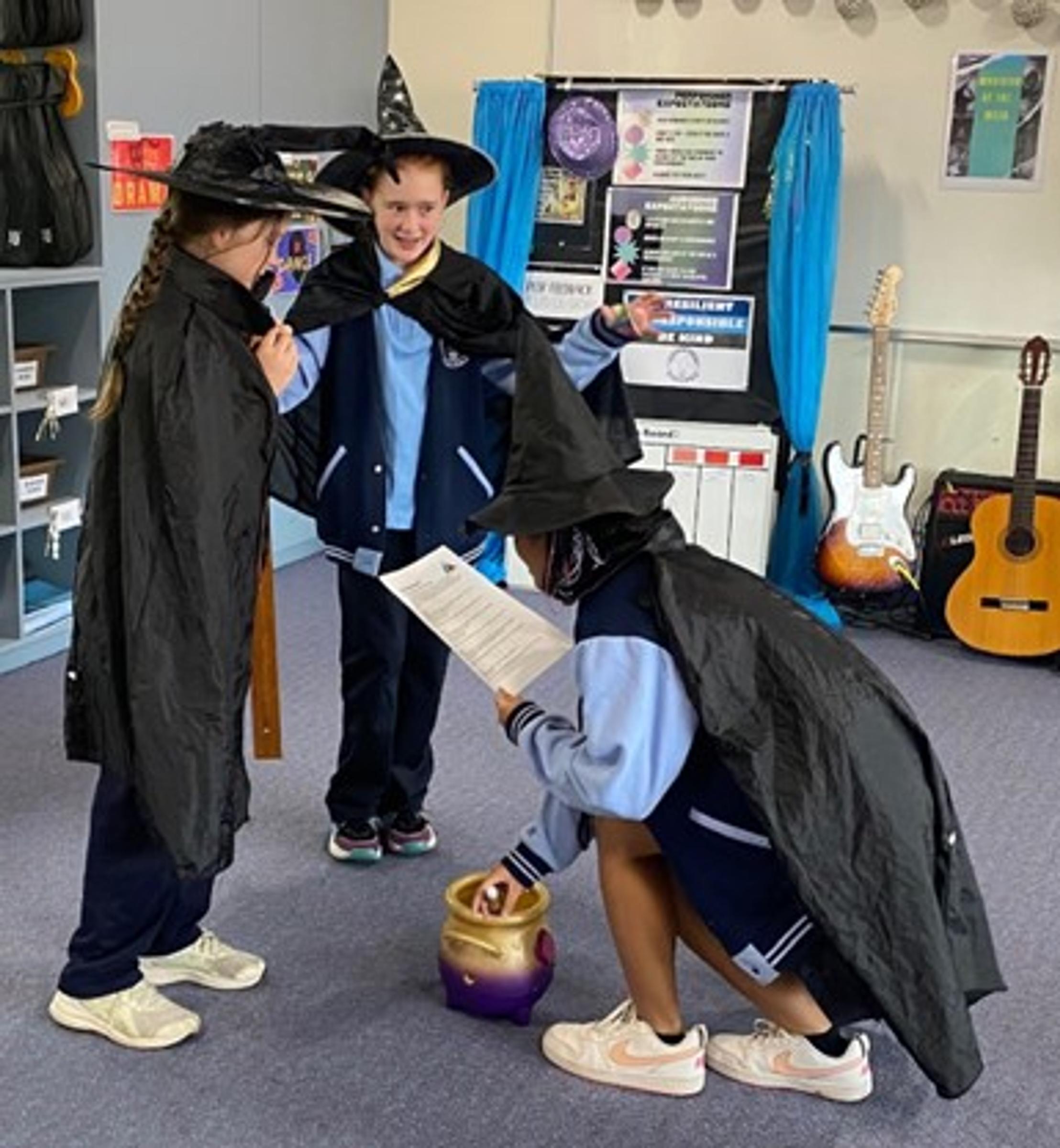
Performing Arts
Choir
We are excited to announce the formation of our school choir for Year 3-6 students!
The choir will meet weekly during the first or second half of lunch, providing a wonderful opportunity for students to join, connect more deeply with the school community and build friendships with their peers. They will explore vocal techniques, learn to sing as an ensemble and develop music reading and performance skills. Additionally, the choir will have the chance to sing a variety of songs and perform at school assemblies and concerts, showcasing their talents to the broader school community.
Foundation
Students explored the concept of beat in music. They clapped, stomped and tapped to a steady pulse using a metronome, gradually increasing the tempo. Students marched to the song, The Tempo Marches On, adjusting their movements as the speed changed. Using rhythm sticks, they practised keeping time with the beat, listening carefully to maintain rhythm as the tempo increased. Through fun, active learning, students discovered how music’s beat feels like a heartbeat—steady but changeable. They reflected on how their movements and timing helped them stay in sync with the music.
Year 1-2
Students were introduced to Boomwhackers, color-coded tuned percussion instruments. They participated in engaging activities such as forming a human xylophone to explore musical notes and develop their understanding of pitch and rhythm. As a whole class, students enjoyed playing simple songs using Boomwhackers, focusing on accurate note timing to produce clear and consistent melodies. To extend their knowledge of pitch and notes, students explored the glockenspiel, concentrating on correct note-playing techniques and producing clear tones. They practised familiar songs such as Mary Had a Little Lamb, learning to follow sheet music and handle mallets properly. Through reflection, students discussed how pitch and tone varied based on their technique and the sequence of notes played.
Ahri (2B): “I learned that playing the boomwhackers has high pitch and low pitch.”
Saskia (2B): “The thing we learned is the notes to Twinkle Twinkle Little Star on the boomwhackers. I had the F note.”
Hamza (2B): “I learned the sounds of high pitch and low pitch.”
Hareem (2B): “I learned the notes CDEFGAB.”
Charlotte (2B): “I played the E note in the song Hakuna Matata on the boomwhackers.”
Alana (1B): “We learned high pitch and low pitch on the boomwhackers.”
Israel (1B): “We played Twinkle Little star on the boomwhackers.”
Saamaya (1B): “We had to hold our boomwhackers properly.”
Harrison (1B): “We had to be responsible using the boomwhackers.”
Images: Students forming a human xylophone using boomwhackers and playing songs as a whole class
Year 3-4
Students explored the musical Charlie and the Chocolate Factory, focusing on the song "I’ve Got a Golden Ticket." They learned about the characters and themes of the story, practicing singing the song with clear articulation and incorporating gestures to reflect the excitement of finding the golden ticket. Students performed short improvisations in small groups, showing the excitement of the moment Charlie finds his golden ticket. They used facial expressions, voice and movement to bring the emotions of the scene to life!
Musa (4C): “We listened to the Oompa Loompa song. We performed finding the Golden Ticket.”
Eliana (4C): “My favourite part of this lesson was when my group acted to the class.”
Grady (4C): “We were performing the scene where Charlie found the golden ticket and we acted out excitement!”
Jahnavi (4C): “I liked how most people acted the part when Charlie got the golden ticket.”
Images: Students performing improvisations of finding the “Golden Ticket”
Year 5-6
Students were introduced to the famous playwright William Shakespeare and his work, focusing on the opening witches' scene from Macbeth. After discussing the characters, students worked in small groups to rehearse and perform the scene, incorporating dramatic voice modulation, expressive movements and props. They practised following character and staging directions included in the script. Students then reflected on their performances, considering how their use of drama elements helped create atmosphere and enhance the overall presentation.
Alyra (6D): “I learned how to do voice changes when I performed my scene.”
Ella (6D): “We learned about William Shakespeare.”
Madi (6D): “I had to learn how to follow a script.”
Holly and Rylie (5D): “For performing arts we were rehearsing a script and we had to speak in a different voice while doing movements.”
Adam (5D): “I learned how to memorise dialogue and it was very interesting how we spoke in character.”
Images: Groups performing the opening scene from Macbeth!
